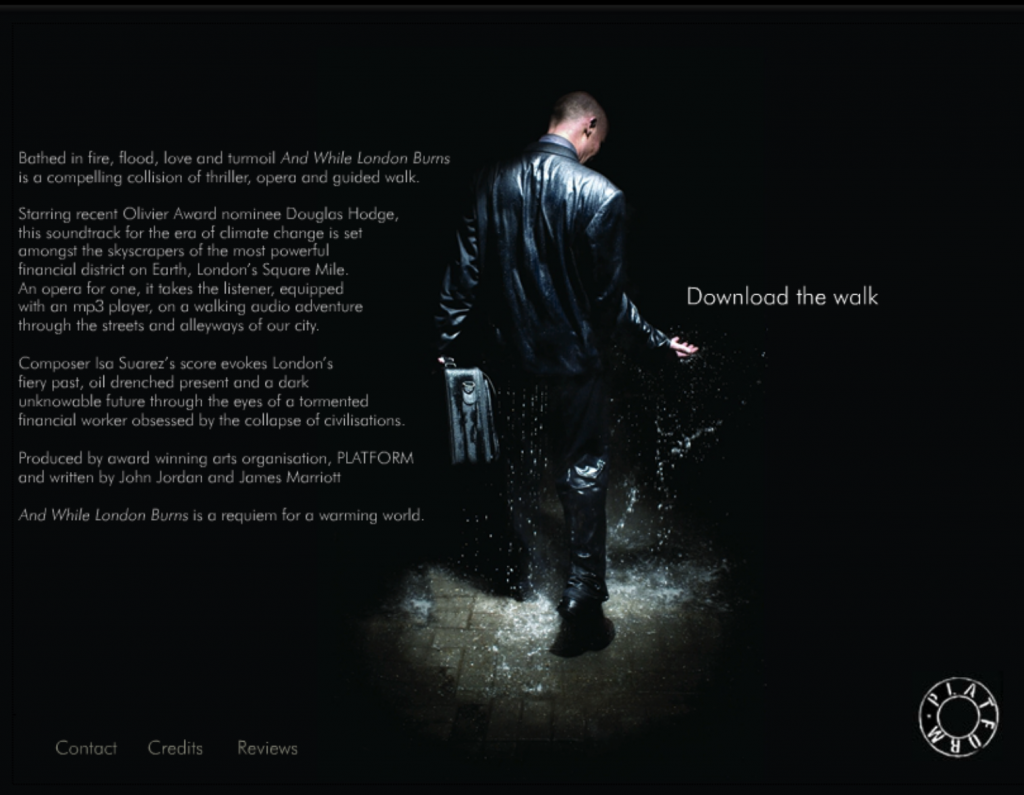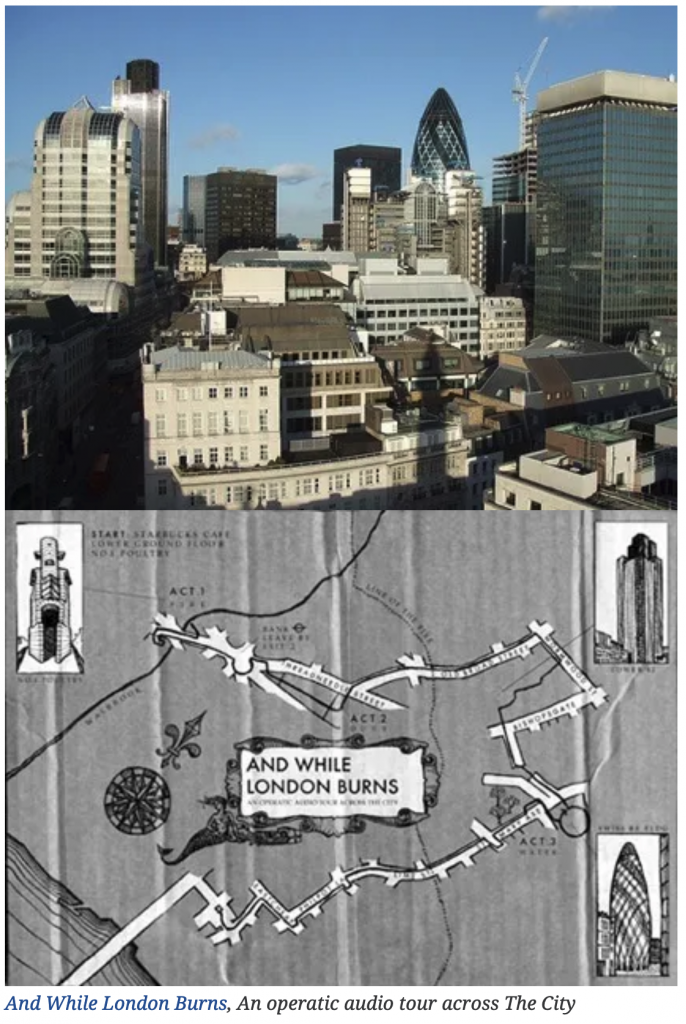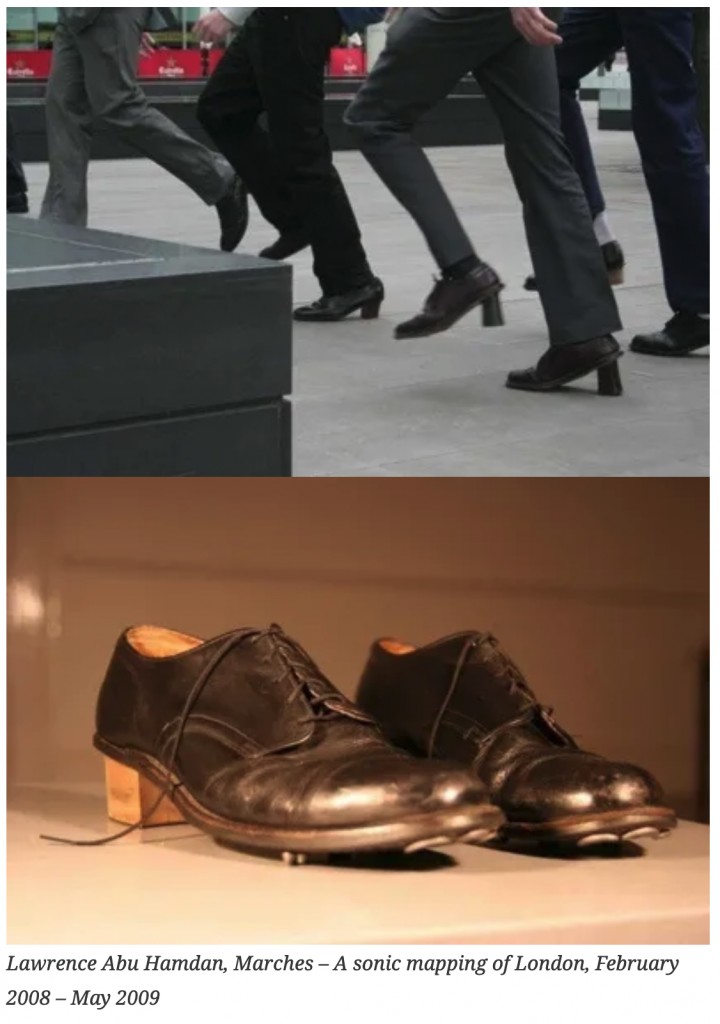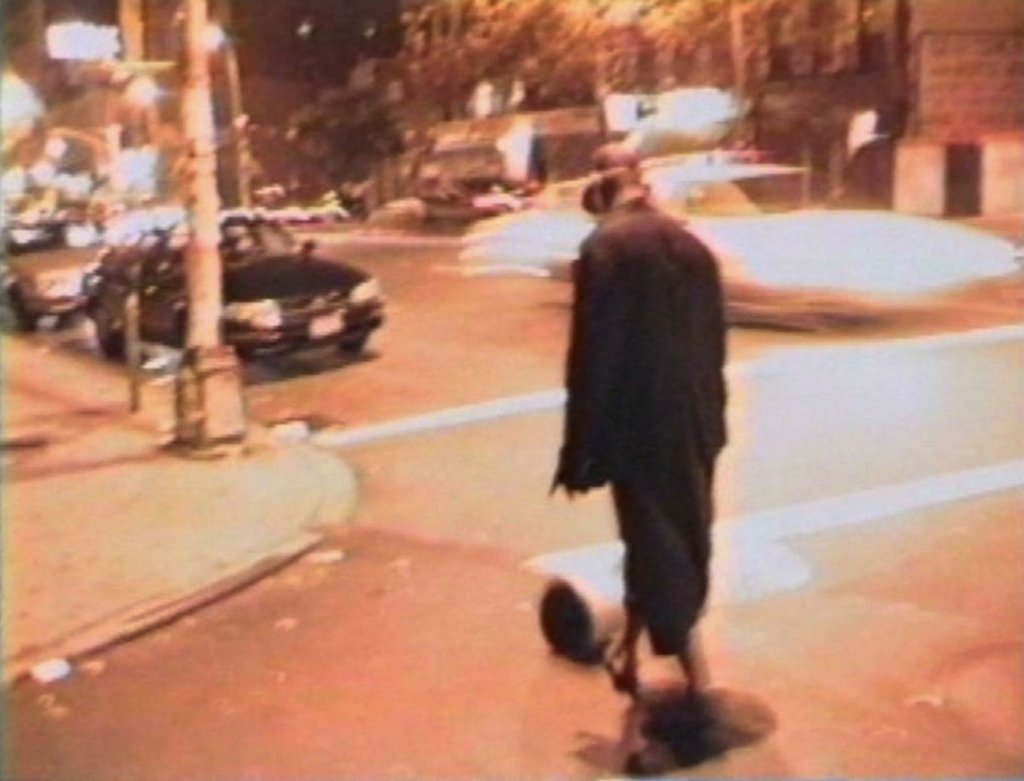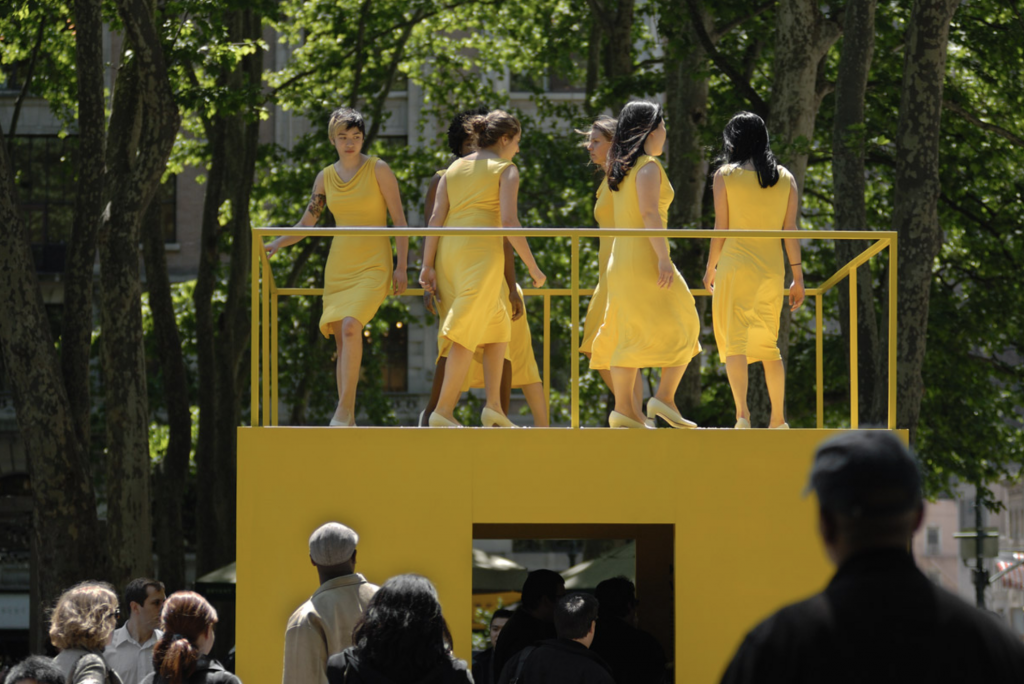
[credit]
Like the mazes of office cubicles in so many of the buildings that surround Bryant Park, Walk the Walk comes to life over the course of a working day.
From Monday to Friday, Kate Gilmore’s performance-installation creates a spectacle of color, movement and sound from 8:30am to 6:30pm. Gilmore (b.1975, Washington, D.C.) presents a cubic structure, open on all sides, with a flat roof that functions as a podium. Working in shifts, groups of women take to the roof where they perform an improvisational choreography of everyday movement, such as walking, shuffling, and stomping. Neither professional dancers nor theatrical performers, Gilmore’s participants resemble a random sample of female office workers. They vary in age, race, and body type. Free to perform their artist-assigned task as they choose, they must nevertheless conform to a strict uniform of yellow dresses and beige shoes.
Members of the public are invited to observe the piece from the surrounding Fountain Terrace, but also to enter the open structure. The yellow theme of the women’s dresses continues on both the exterior and interior walls of the structure. Once inside, visitors may hear the reverberating sounds of the movement overhead. In this eccentric concerto of irregular footfalls, the physicality of Gilmore’s performance is experienced anew.
Kate Gilmore is best known for her physically demanding performance videos in which she is typically the sole protagonist. Walk the Walk is Gilmore’s first live public project and also her first to deploy other participants. Her interest in striking and often incongruous images continues in this piece, with its unexpected transformation of architecture, figures, actions, and location. In this way, the artist makes us aware of our assumptions about the codes of appropriate behavior and the limits of self expression. How do the attributes of gender, age, and appearance shape our perception of both social roles and personal desires? In Walk the Walk, Gilmore literally and metaphorically turns the inside out, inviting us into a world at once all too familiar and strangely provocative.

